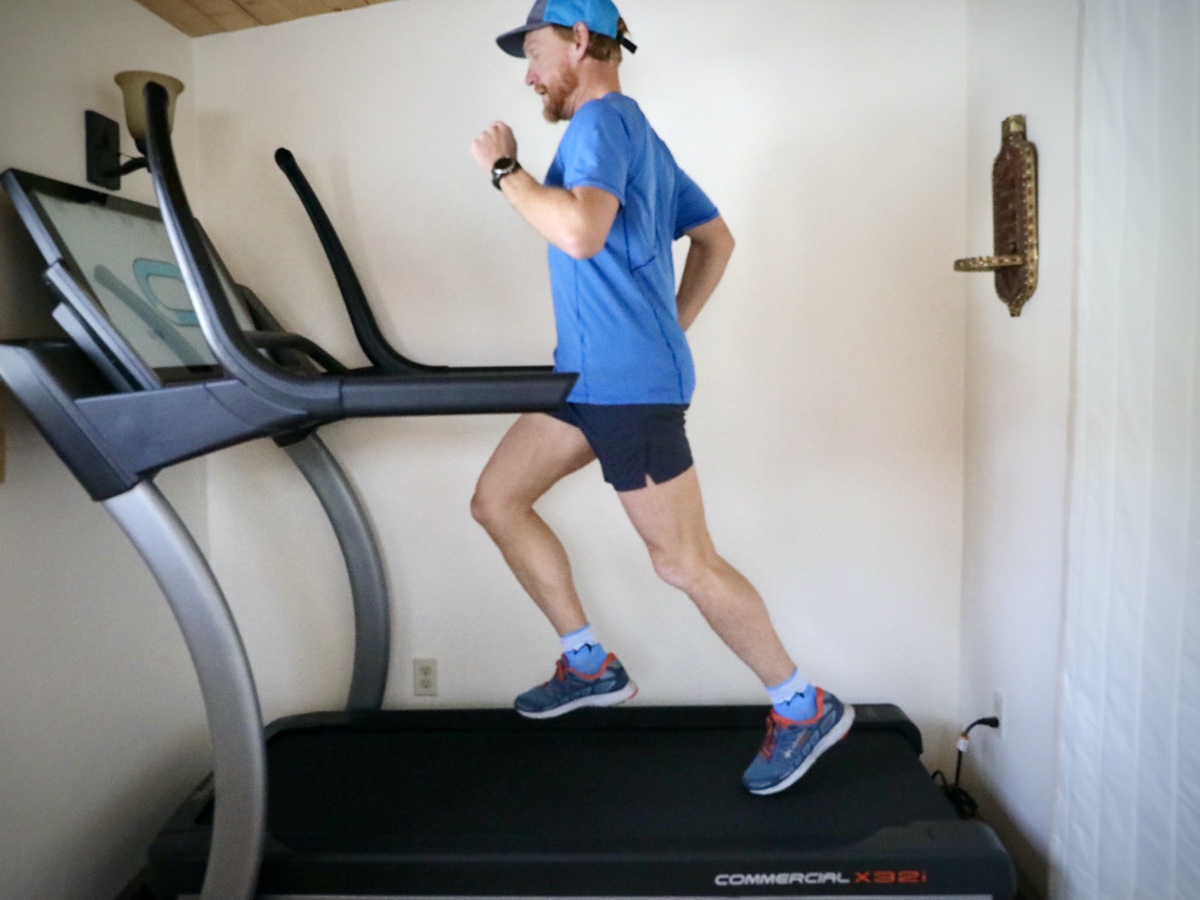 If you’re like me, there is always a time when running in rain, snow, cold, or darkness just gets old. When this happens, many of us seek respite on the treadmill. What a treadmill lacks in scenery and variety, it supplies with warmth and good footing.
If you’re like me, there is always a time when running in rain, snow, cold, or darkness just gets old. When this happens, many of us seek respite on the treadmill. What a treadmill lacks in scenery and variety, it supplies with warmth and good footing.
Here on iRunFar, we’ve previously discussed the many uses and benefits of treadmill running as well as some treadmill workout ideas. But what about the drawbacks? Besides boredom, treadmill running can be problematic to how we run. The way we move our bodies on this mechanical beast can be significantly different from what we do on the unfettered earth. And, for many of us, those differences may have orthopedic and performance consequence. We can avoid these issues–and get in a great workout–with a little extra focus on our running form.
The Challenges of Treadmill Running
A treadmill’s components make running on it inherently different than outdoor running. Some of these features can constrain efficient running posture and hip mobility:
- Deck. This is the platform upon which we run. The average treadmill deck is 45 to 60 inches long and 16 to 22 inches wide. That’s not exactly roomy if you consider that a moderate running-stride length is 40 to 50 inches. Some of us fear falling off the back, so we stand too close to the front of the deck and shorten our hip extension so there’s no chance of our foot going off the back of the deck.
- Console and railings. The console is the treadmill control screen and it’s usually positioned in the front. Most treadmills have safety railings on both sides of the deck. Many people modify their stride so as to avoid hitting the console by running more upright rather than naturally hinged forward at the hip. Also, the console may get in the way of upward and forward hip drive and arm swing if we run too close to it. Finally, once in a while, we might clip our arms on the railings, and this causes some people to preventatively limit their arm swing.
- Belt. The spinning belt provides the propulsion for running. The belt doesn’t necessarily constrain our stride, but it can make us lazy. While real-world running requires a strong push-pull over and through the world, a spinning treadmill belt takes our foot and pulls it behind us, allowing our stride to become more passive if we let it. As a result, it is easier to over stride, or land in front of our body’s center of mass. This decreases our speed and increases the landing stresses our legs must absorb.
Four Treadmill Running Efficiency Tips
While the treadmill may have challenging constraints, efficient running is still possible with some added awareness. Here are four efficiency tips to consider:
- Posture. Maintaining efficient trunk alignment and hip hinge is crucial on the treadmill. Doing so, though, may make you feel that your knees, hands, or body will contact the console or that you may fall off the back of the deck. Rest assured, even if the space is constrained compared to the outdoors, when you run with good posture in the middle of the deck, there should be enough room for upward and forward hip movement in front of you and hip extension behind you.
- Hip flexion. The console can stifle upward and forward hip drive if you’re running too close to it. Fight the urge to low-swing with assertive hip flexion and correctly positioning yourself in the middle of the treadmill deck. This should allow you to flex your hips efficiently.
- Arm swing. Efficient arm swing is made up of small, strong, and mostly rearward oriented swings. That centered position on the treadmill deck should keep your arms off the railings and console. If you still repeatedly hit one of them when you’re running on the center of the deck, this could be a sign of an arm-swing inefficiency.
- Pawback. An assertive downward and rearward hip action is always a great strategy for efficient landing and push off. Practice this strategy on the treadmill by actively pushing and pulling the spinning belt beneath and behind you as you run, to prevent the spinning belt from doing all this work for you.
Watch this video to learn more about these four tips:
Treadmill Running Bonus: Stride Self-Assessment!
The treadmill provides one more bonus: the ability to assess your stride as you run! Many gyms have mirrors or reflective windows along the front and sides of a bank of treadmills. At home, inexpensive closet mirrors can easily be leaned against or nailed to walls in a room or garage. Such mirrors go a long way in providing real-time stride feedback.
Final Thoughts
The treadmill is a valuable tool when the challenges of the world or life don’t allow for free running outdoors. If you adjust to these small but significant challenges, treadmill running can not only get you through those tough times, but it can also be a great accompaniment to a strong, comprehensive training plan. Lastly, remember that even though the treadmill might be an occasional respite from poor conditions, always endeavor to “Look Fast, Feel Fast,”even on a recovery run!
Call for Comments
- What elements of your running stride do you think suffer or thrive on a treadmill as opposed to running outdoors?
- Does a part of your treadmill seem to get in the way of your running? Do you catch yourself needing to reposition in the center of your treadmill deck to steer clear of it all?

